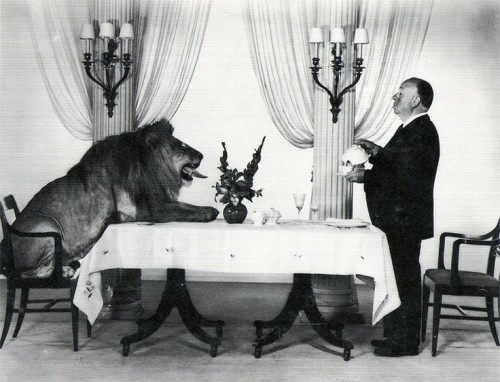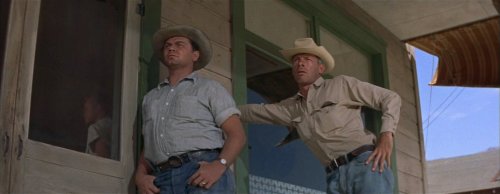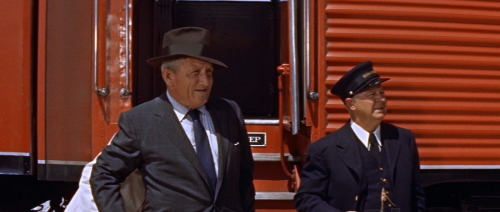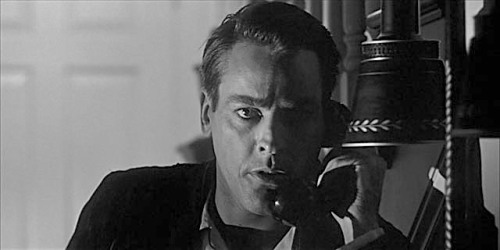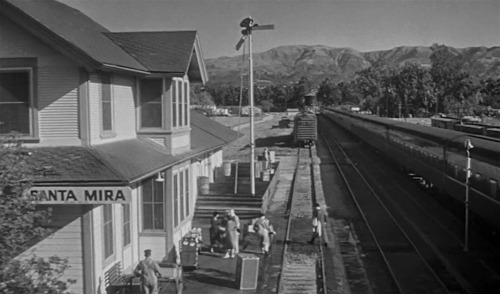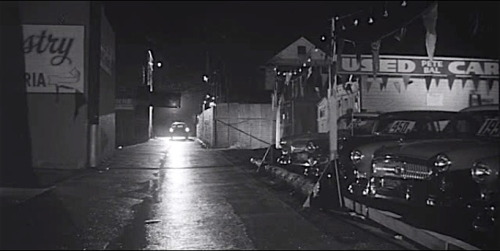#the fifties

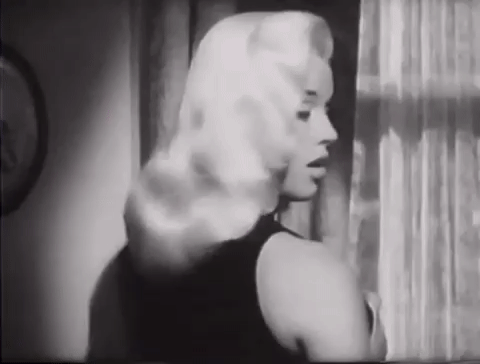
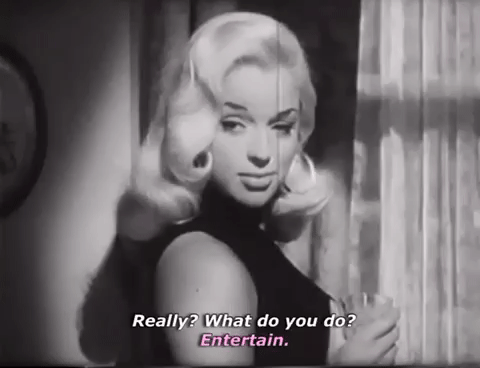
Diana Dors in PASSPORT TO SHAME (1958).
I drew a rockabilly fox for last weeks WeDraw on vine. By the way I’m one of the hosts and you should go and participate with us. It’s full of great people
Post link
Bad Day at Black Rock (1955) Directed by John Sturges
Any hot summer day is a good excuse to draw the curtains, get the room dark and cool, and watch this mid-century thriller that now stands as a minor masterwork of distinctly American cinema.
In an unforgettable establishing shot, one-armed WWII veteran Spencer Tracy steps off a Southern Pacific streamliner at the far end of the high desert in Nowheresville, California. Actually he’s in Black Rock, a dusty, near-vacant town surrounded on all sides by vast, dry expanses of…well, vast dry expanses.
He’s looking for a Japanese man who lives a few miles away in the mountains, and he’s asking for a ride out to the property. The nine or so town residents, who range in demeanor from weirdly suspicious to full-on menacing, don’t like that idea at all. In fact, these grim heavies (Robert Ryan, Ernest Borgnine, and Lee Marvin as a trio of Post-War rattlesnakes) don’t like Tracy on principle.
After all, this is the first time in four years that train has even slowed down in Black Rock, and this visitor keeps asking about the Japanese guy even after everyone says he should forget about the Japanese guy.
One can’t help suspecting that a kind of storm cloud is building strength way out near the horizon.
The tension grows at an excruciating pace, thanks to a taut script superbly complemented by wide, lingering, but never wasted CinemaScope angles.
(You could almost say this is why CinemaScope cameras were invented and why director John Sturges was born.)
In any case, once Tracy clashes head-on with the town, the moment is like a sudden lightening bolt on a hot, dry day: no wind, no rain, just scorched earth and a cloud of dust.
Post link
Invasion of the Body Snatchers (1956, directed by Don Siegel)
There are no saucers, no death rays, no monsters: just the steadfast and magnificently creepy invasion of our very souls.
Actually, the “visitors” are removing souls and taking over the bodies of everyone in a quiet California town. This brilliant bit of manipulation blends authentic horror with pure Cold War paranoia, and first-time viewers of this film invariably are surprised that a sci-fi thriller of the 1950s still packs such an emotional wallop. It’s ideally structured as well, through the use of flashback narrative and the second act’s stunning moment of realization that takes place during a steaks-and-martinis evening on the patio. Talk about subversive.
The title is so entrenched in the lexicon that people who have never seen the picture feel they at least understand its basic theme. Take the time to see it and you will be astonished by its effectiveness. Daniel Mainwaring, who penned some of the better noir thrillers of the ‘40s, including Out of the Past, crafted a script that seamlessly weaves science fiction elements into the mystery/suspense genre. Few modern thrillers are more compelling in pace or construction.
Debate over the proper allegorical reading of the plot justifies this film’s status as the quintessential essay on Cold War paranoia. Do the invaders represent emotionless, Godless communist infiltrators, or are they the ultimate conformists in lock step with Joe McCarthy?
You can argue either side, but the threat remains that of forced, irreversible orthodoxy at the genetic level. When the invaders take over your body, not only will you be different, you won’t even care. As one of the aliens calmly puts it, “Tomorrow you’ll be one of us.”
While there is delightful poetry in the fact that the lead actor’s name is Kevin McCarthy, the popular myth that the studio made an anti-communist story while director Don Siegel pushed for an anti-McCarthy theme has been debunked by the director himself. Siegel believed the story’s impact was in the horror of losing emotions or individuality, apart from whatever politics may be applied. He often referred to less creative Hollywood staffs and studio executives as “pod people.”
His actual conflict with producers concerned only the opening and concluding hospital scenes, which were tacked on by the studio. The original story ended with Kevin McCarthy shouting “You’re next!” at oncoming vehicles (and, consequently, the viewing audience), but the studio insisted on the “upbeat“ending.
In retrospect, one might question whether that ending is any less disturbing. Watch very carefully what transpires in that hospital scene, and then consider what has thus far occurred to anyone discovering the alien plot. There is a logical flaw in the assumption that the final scene is any kind of resolution at all–but let’s not give anything away.
One may also find a perverse satisfaction in the fact that the alien takeover constitutes a wide-scale role reversal for conformist, middle-class America.
The calm, well-behaved small-town citizen—the fellow in line behind us at the supermarket—is an alien who just happens to be devoid of emotion.
That disheveled maniac running headlong into traffic? He’s the family physician, and he happens to be the only human in town.
Post link

